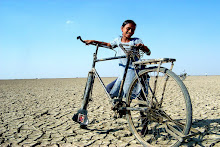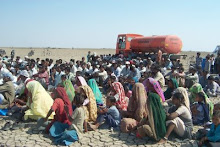Initiative fits into country’s push to invest heavily in renewable energy
That's a new development. For years, there used to be loud, sputtering diesel machines running constantly to pump out the salty brine stuck underground, which the farmers then spread out into the square fields to evaporate and produce salt crystals.
Now, it's solar panels that dot the vast arid desert, powering the pumps.
The switch to harnessing the power of the many hours of sunlight that shine on the Kutch district of India's western Gujarat state has dramatically changed Sawadiya's life.
"We finally make a profit because of solar, after years of toiling," the 59-year-old farmer told CBC News.
"Before [we got] solar panels, there was barely enough money to eat and not a rupee more."
.jpeg) |
| Sawadiya holds salt harvested from the marshes. (Salimah Shivji/CBC) |
.jpeg) |
| Jassiben Sawadiya washes pots while grandson Kushti plays near the salt pan. (Salimah Shivji/CBC) |
It's government land that they return to every year to help produce around 30 per cent of India's salt found inland, which is mostly table salt.
WATCH | Solar power changing lives for salt farmers in India:
Until they received help to buy the solar panels and install them beside their salt pans, the farmers would start each season in debt, forced to borrow heavily from salt traders so they could buy the 15 or so barrels of diesel that their old pumps required.
The borrowed costs could go up to 300,000 Indian rupees, or nearly $5,000 Cdn, a season.
"We would return with bags full of salt, but were left with nothing not enough money," Sawadiya said.
Problems with diesel
The constant smoke and toxins from the diesel made them "sick and caused so many problems," he added. His hands were also frequently stained black from having to fiddle with the machines.
Sawadiya's two solar panels now have a prime position next to the family's tent, where his young grandson, Kushti, is playing. There is still one diesel pump that is only used as a backup at night or when it's cloudy.
.jpeg) |
| Sawadiya stands near an old diesel machine. (Salimah Shivji/CBC) |
"Life has gotten better after solar."
The family was able to build a new house in their village and pay for their son's wedding because of the several thousands of dollars they're now saving each year without the need to buy diesel fuel.
There's freedom because "we don't have to borrow money from anyone else," Jassiben Sawadiya said.
Hefty government subsidy
Most of the nearly 5,000 Agariya families who work in the salt desert have taken advantage of a large subsidy from both the Gujarat state and federal governments that covered 80 per cent of the cost of one solar panel.
The initiative fits neatly into India's push to invest heavily in renewable energy, while slowly trying to wean the country of its dependence on coal.
The South Asian country still depends on coal the dirtiest of fossil fuels for more than 70 per cent of the power it generates.
.jpeg) |
| India's salt farmers, or Agariyas, move to the desert for months to harvest the salt. (Salimah Shivji/CBC) |
Still, India's solar energy sector is growing quickly, with installed solar capacity now higher than 108 gigawatts, according to the government's press bureau. It sat at less than three gigawatts a decade ago.
'The output is very good'
The country is also focused on building large-scale solar farms, clusters of millions of panels in rows and columns that produce clean power.
"With solar, the farmers' expenses are close to zero and the output is very good," said Bharatbhai Somera, who has volunteered for years with local NGO Agariya Heet-Rakshak Manch, which advocates for the salt farming community.
He grew up in an Agariya family in the salt desert and watched his father work constantly for little gain.
.jpeg) |
| Social worker Bharatbhai Somera says farmers' expenses are 'close to zero' with solar. (Salimah Shivji/CBC) |
Moving to renewable energy has also repaired community bonds.
"With diesel, the farmers had to constantly keep an eye on the machine 24 hours a day," Somera said. If there was a family function, the Agariyas would have to skip it.
"Now solar works on its own and they can go see their family and attend weddings."
Subsidy impact remains
But even though the benefits were obvious to Somera and his colleagues, he said it took numerous demonstrations and a lot of convincing to "let the idea sink in" with government officials before the subsidy was approved.
It lasted for five years, but the subsidy is no longer being offered, even though the massive impact it had remains.
.jpeg) |
| Pankti Jog, program director for the community organization Agariya Heet-Rakshak Manch, says salt farmers would benefit from assistance in case their solar panels break down. (Salimah Shivji/CBC) |
She said most of the families now have at least one solar panel, but with the subsidy gone, a system of assistance for insurance, in case the panel breaks down or gets worn out, would help most of the farmers.
Life in isolation
Life in the vast arid desert surrounded by salt marshes is still very difficult, with an acute sense of isolation.
There are no medical clinics or family doctors and children go to school in abandoned buses, with their motors removed, parked haphazardly in the middle of the sunburnt landscape.
On one spring afternoon, a dozen children packed into one of the buses, sitting at small desks in the converted interior of the vehicle, with several of the older kids leading a vocabulary check while waiting for the teacher to arrive.
 |
| Children go to school in abandoned buses parked haphazardly in the Little Rann of Kutch desert. (Salimah Shivji/CBC) |
.jpeg) |
| Children take their lessons inside the bus. (Salimah Shivji/CBC) |
Jerabhai Dhamecha, 34, has three daughters and one son, all in elementary and middle school.
As he raked his large salt pan, gathering the salt crystals to one side, he listed what his solar panels have brought the family a new brick house in their village, a new tractor, a motorcycle.
'My grandfather didn't have anything'
Before solar energy changed everything, "we couldn't even buy a bicycle," said Dhamecha, 34.
"My grandfather didn't have anything. They used to carry water and bring it [to the fields] on foot."
He's now making about 60 per cent more profit, without the cost of diesel weighing him down.
A fellow Agariya chimed in with a similar thought, as he eagerly demonstrated how his solar-powered water pump worked.
Kalubhai Surela, 58, compared the panels to having an extra son or to having his father, long dead, return to help the family earn an entirely new salary.
"Our grandfathers felt nothing but sadness in this desert. Their lives were a struggle," Surela said.
"But now, after solar energy, there is pure joy here."
ABOUT THE AUTHOR
Salimah Shivji
Journalist
Salimah Shivji is CBC's South Asia correspondent, based in Mumbai. She has covered everything from natural disasters and conflicts, climate change to corruption across Canada and the world in her nearly two decades with the CBC.
.jpeg)

.jpeg)
.jpeg)








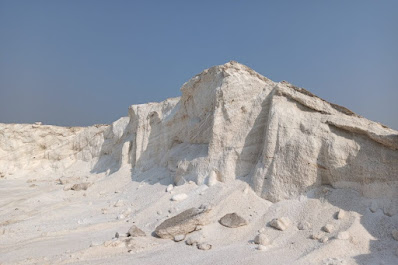

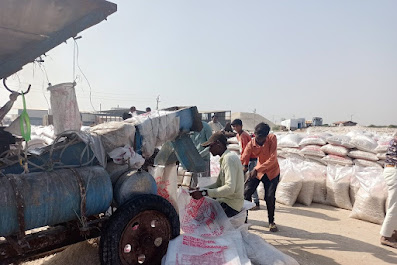



















.jpg)
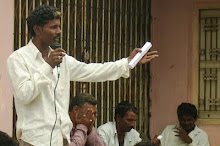.jpg)
.jpg)
.jpg)
